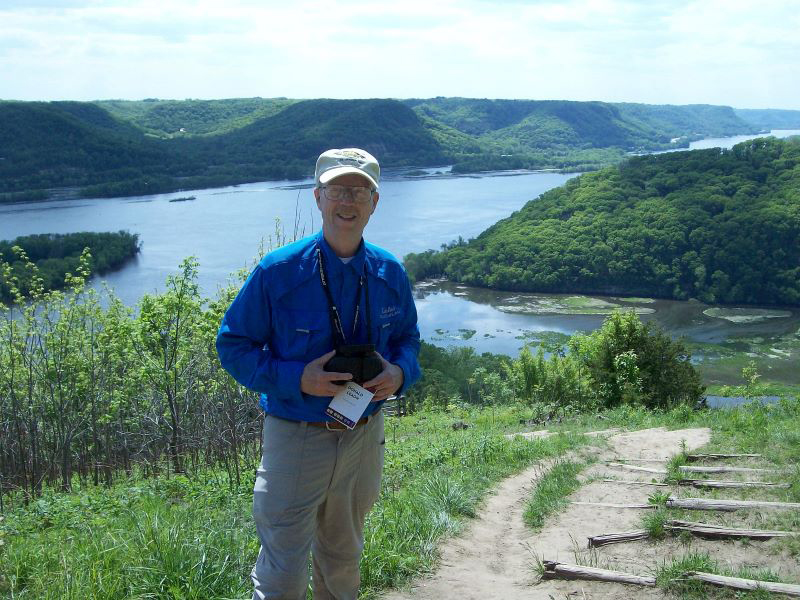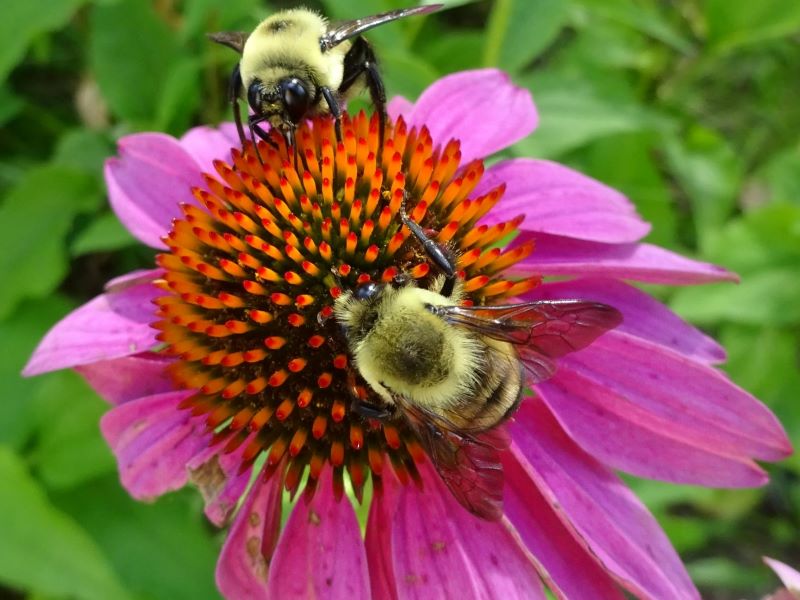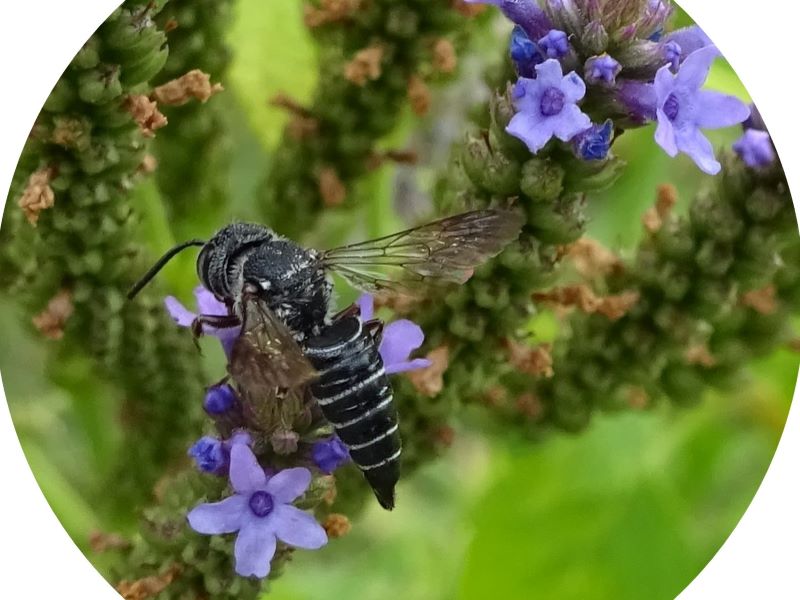Don Leaon of St. Cloud, Minnesota has been a loyal Xerces member since 2019. Upon retirement, Don’s interest in invertebrate conservation took flight while taking classes to become a Master Naturalist at the University of Minnesota. It was there that he learned about the Minnesota Bee Atlas and began volunteering submissions in earnest.

Inspired, Don and his wife set out to create more habitat in their own yard, where they have established a plethora of native plants, flowers, and native grasses. Instead of a large lawn to maintain, they now enjoy overseeing an oasis of habitat for invertebrates and other wildlife.
Don says, “I have learned from Xerces that we can all make a difference and that collectively that difference is significant. I think perhaps one of the best things any of us can do is to plant native wildflowers, shrubs, and trees to provide habitat for invertebrates and to share our knowledge and interest in invertebrates with others.”
Don has been kind enough to share with us an array of beautiful photos from their garden, documenting the diversity of life that can be possible with just a few years of habitat restoration, and some of Don’s favorite invertebrates.





